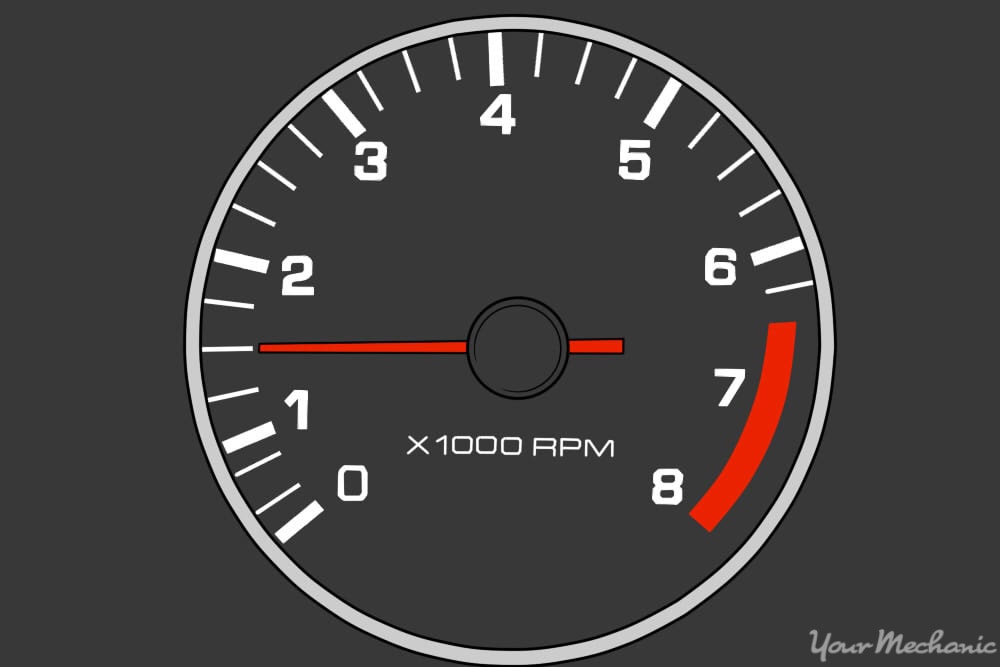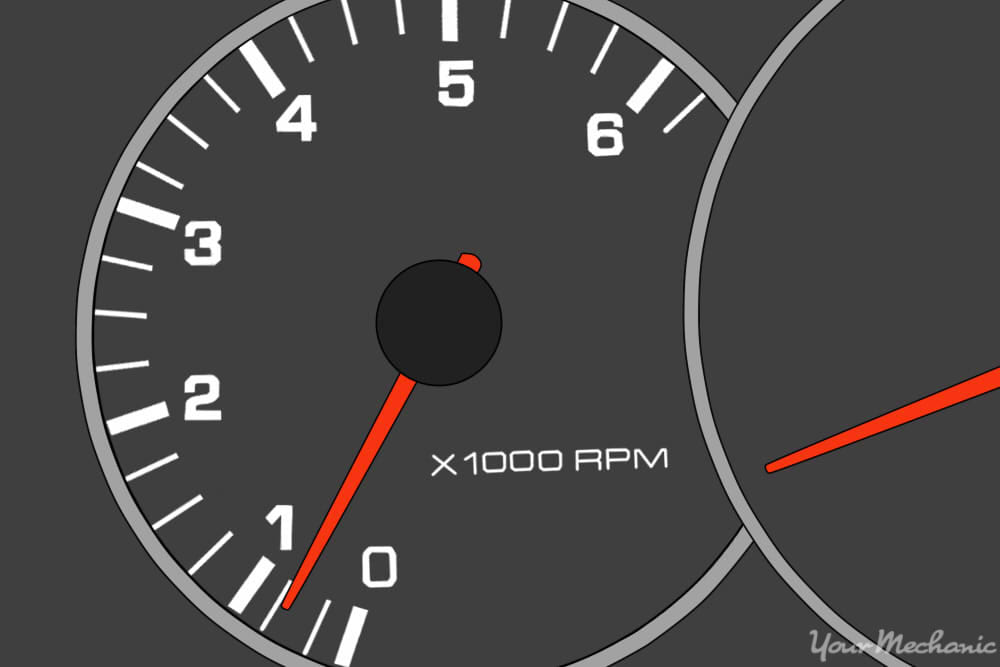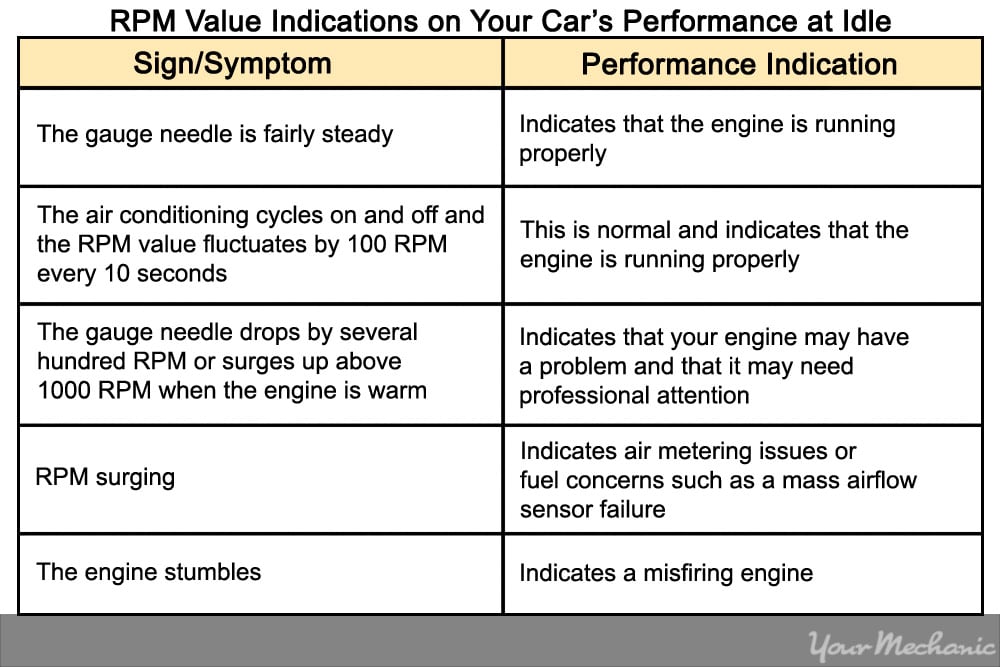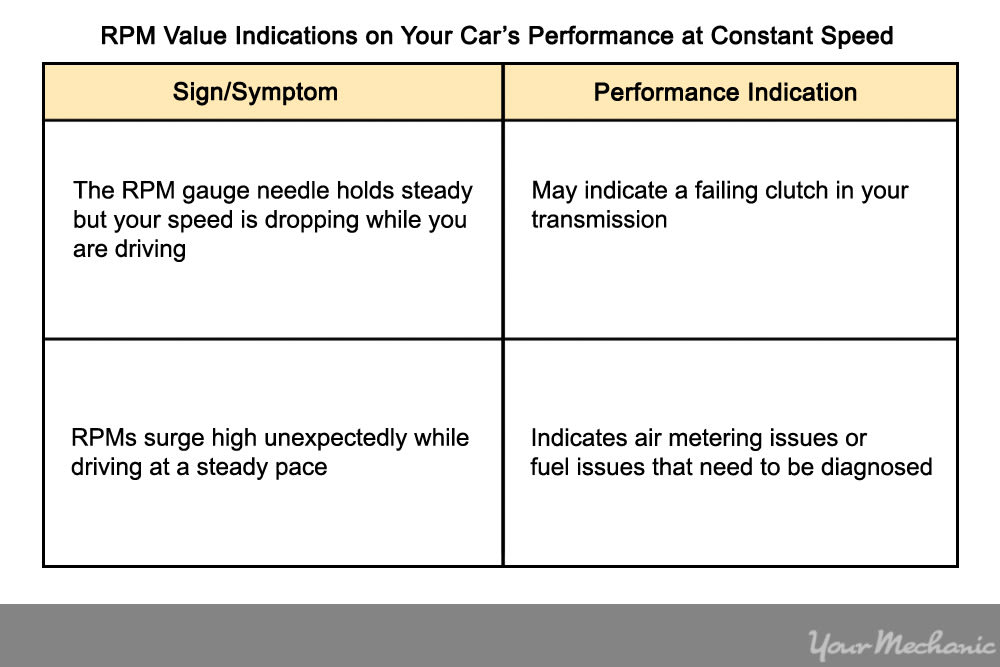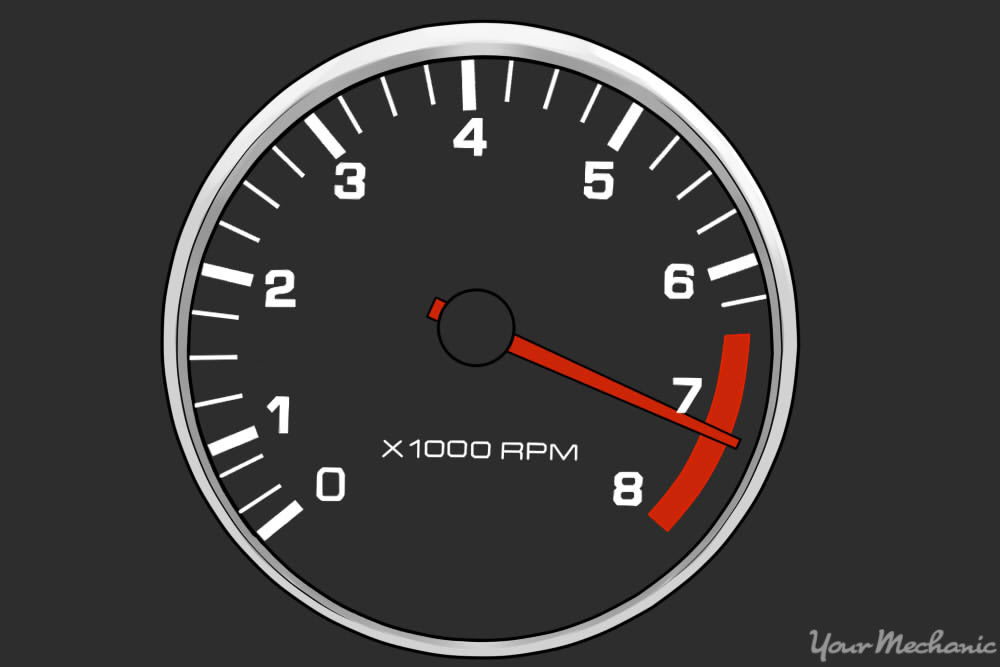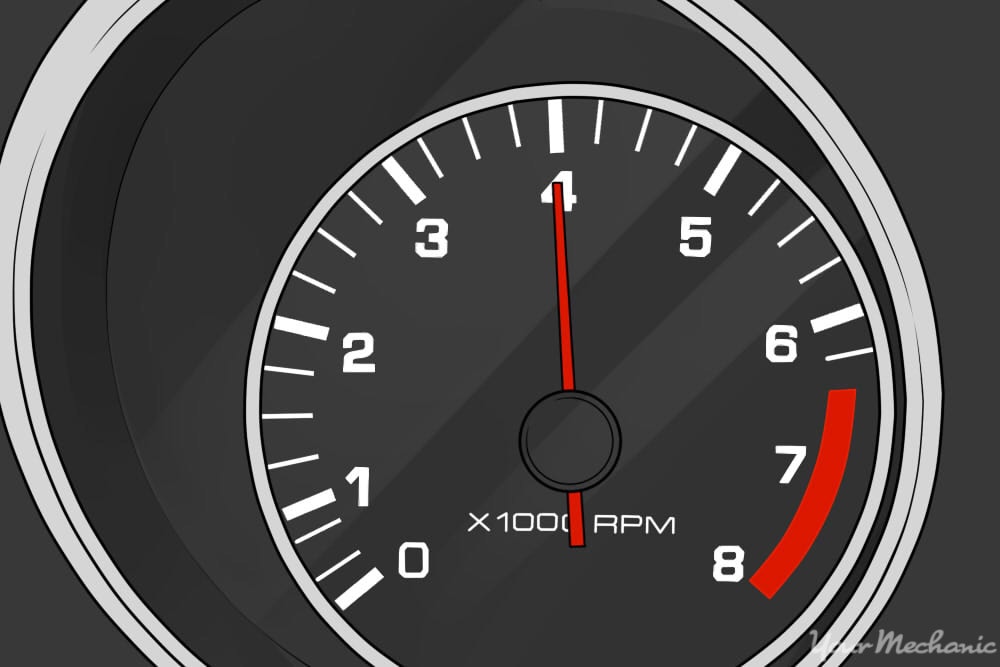

When you start your car, the crankshaft inside the engine begins to turn. The engine’s pistons are connected to the crankshaft, and they rotate the crankshaft through their up and down motion. Each time the crankshaft completes a 360-degree turn, it’s called a revolution.
RPM or revolutions per minute refers to how fast the engine turns. The internal components in your engine move so quickly that it is difficult to keep track of the number of revolutions manually. For instance, at idle, your engine completes 10 revolutions or more per second. For this reason, tachometers or RPM gauges are used in cars to track the RPM.
Knowing your engine RPMs is important to:
- Decide when to shift gears on a manual transmission
- Increase your car’s mileage by shifting gears at the right RPM level
- Determine if your engine and transmission are operating properly
- Drive your vehicle without damaging the engine.
Tachometers or RPM gauges indicate the RPM as a multiple of 1,000. For example, if the tachometer needle points to 3, it shows that the engine is turning at 3,000 RPM.
The highest RPM range at which you start to run the risk of seriously damaging your car’s engine , referred to as the red line, is marked in red color on the RPM gauge. Exceeding an engine’s red line can result in significant engine damage especially over extended periods of time.
Here’s how you can use the tachometer or RPM gauge to operate your vehicle safely.
Method 1 of 3: Shift your manual transmission smoothly
If your vehicle is equipped with a manual transmission, you can use your RPM gauge to help you shift your transmission smoothly and prevent your car from stalling.
Step 1: Accelerate from a stop by monitoring your RPMs. If you try to accelerate from a stop without increasing your engine RPMs, you’ll likely stall the engine.
Increase the RPMs from idle to 1300-1500 RPMs and only then ease off the clutch pedal to smoothly accelerate from a stop.
- Tip: With a manual transmission, it’s possible to proceed from a stop in first gear without even pressing the accelerator pedal. From a stop, ease off the clutch pedal very slowly while making sure that the RPMs don’t drop below 500. Once your car is in motion, you can press the accelerator to increase your speed, though it may be a little jerky at first.
Step 2: Use your RPM gauge to determine when to upshift. When you accelerate in a manual transmission vehicle, you need to upshift to a higher gear eventually to continue accelerating.
- Note: On light acceleration, upshift to the next highest gear when the RPMs are around 3,000 rpms. On hard acceleration, upshift when the RPM gauge shows around 4,000-5,000 rpms.
Step 3: Use your RPM gauge to downshift. When you need to slow down in a vehicle with a manual transmission, you can monitor the RPMs to determine when to smoothly downshift to a lower gear.
Press the clutch in and rev the engine to the engine speed at which you would normally shift to a lower gear.
Shift to the next lowest gear, then slowly let the clutch out to engage the gear. You’ll be at the upper range of the gear and can decelerate safely by lowering your pressure on the accelerator.
Method 2 of 3: Check your powertrain operation with RPMs
Using an RPM gauge, you can determine if your car’s engine and transmission are operating properly.
Step 1: Monitor your RPMs at idle.
Observe the tachometer when your car is at idle and look for the following signs or symptoms.
- Tip: If the RPM rate is very high when you car is on idle, it is advisable to get a certified mechanic, such as one from YourMechanic to take a look and fix the problem.
Step 2: Monitor your RPMs at a constant speed. You may have to drive your car at a fixed speed and monitor it for any unusual sounds or signs of trouble.
Method 3 of 3: Operate your engine safely
Every engine has a manufacturer recommended range of RPMs to operate safely. If you exceed those RPMs, you can experience internal engine failure or damage.
- Tip: Check your car’s user manual or the car manufacturer’s website to find a recommended range of RPMs for your car’s specific make and model. You can also do an online search to find the recommended maximum RPM range for your engine.
Step 1: Observe the RPM gauge and avoid RPM spikes. When you accelerate, shift to the next gear before your RPM gauge needle enters the red line area.
If your car’s engine is hesitating during acceleration, it should be inspected by a mechanic as this could be dangerous in situations like where acceleration may be necessary.
- Note: Don’t worry if accidentally spike your RPMs into the red line area. Though it is not recommended, it usually will not cause engine damage if you correct your RPMs quickly.
Step 2: Downshift one gear at a time. If you downshift more than one gear at a time, you may accidentally put the RPMs into the red line area.
Step 3: Avoid hard acceleration. Whenever possible, try to avoid hard or sudden acceleration to high speeds so that you prevent your engine from damage caused by over-revving.
Step 4: Maintain fuel efficiency. For the best fuel efficiency, keep your RPMs between 1,500 and 2,000 RPM when driving at a constant speed.
- Note: Your engine burns more fuel at higher RPMs.
Your RPM gauge is designed to help you operate your car more efficiently and to prevent damage to your engine when driving. Monitor your RPMs and follow the recommended shifting methods to get the best performance out of your vehicle.



